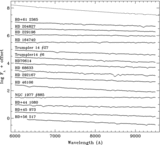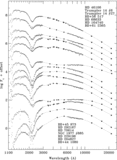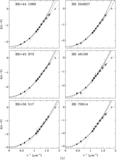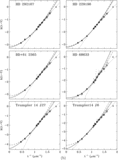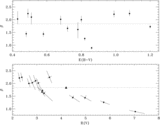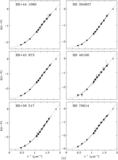Image Details
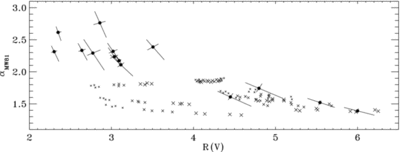
Caption: Figure 8.
Comparison of extinction curve parameters derived from observed and theoretical extinction curves. αMW81 is the exponent that results from a simple power-law fit (see Equation (2)) to the IR extinction at λ−1 = 0.00, 0.29, and 1.11 μm−1. It provides a measure of the shape of the curves for λ>9000 Å. The crosses show αMW81 and R(V) calculated from the Mathis & Wallenhorst (1981) theoretical extinction curves for a variety of size distributions and abundance ratios (see text). The small, medium, and large crosses correspond to (C/Si)dust = 3.25, 6.5, and 13.0, respectively. The filled circles show the same quantities derived from the best-fitting NIR curves shown in Figure 5. This figure shows that some combinations of model dust abundance and size distribution are not favored by nature. Most notable, are the crosses in the lower left of the figure, which does not contain observed points. The models in this region correspond to size distributions with small upper cutoffs for silicates (a+ = 0.25 μm) and large upper cutoffs for graphite (a+ = 0.40 or 0.50 μm). The Mathis & Wallenhorst (1981) models are not useful for addressing the shapes of the smaller R(V) sight lines.
Copyright and Terms & Conditions
© 2009. The American Astronomical Society. All rights reserved.


